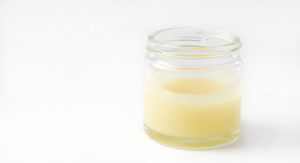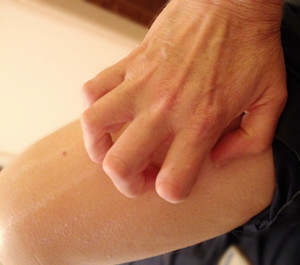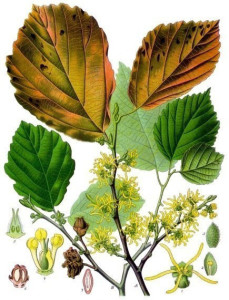 In the last post we discussed using soap-free cleansers to soothe itching skin. Here, as promised, are some recipes for soap-free skin cleansers you can make at home.
In the last post we discussed using soap-free cleansers to soothe itching skin. Here, as promised, are some recipes for soap-free skin cleansers you can make at home.
Soothing Skin Cleanser
Fragrant rosewater adds a luxurious touch to this gentle cleanser. Never use essential oils on your skin – despite being all-natural, they can cause phototoxicity and irritation. All perfumes can be irritants to people with HIT, even natural rose, so if you find it’s a problem for you, substitute distilled water or boiled and cooled water. Natural rosewater is, nonetheless, very beneficial to the skin.
Ingredients:
- 1/4 cup aloe vera gel
- 2 tablespoons almond oil
- 2 tablespoons rosewater
- 1 tablespoon soapwort extract [1] (available from online stores, cosmetics stores and Amazon)
- 5-10 drops coconut oil
- 3-5 drops or 1 capsule vitamin E oil (optional)
Instructions:
- Mix all ingredients together and store in container with tight fitting lid.
- To use: wet face, apply in small circles and rub in for 30 seconds, wash off with warm water.
- The water and oil may separate, so shake the container well before use.
*[1] Soapwort (Saponaria officinalis) is a useful and pretty plant, easily grown in the garden. You can buy it here.
Refreshing Skin Cleanser
This mixture cleans and refreshes your skin. It does not dry out the skin and it leaves no residue. The baking soda has a gentle exfoliant action and the aloe soothes and heals.
Ingredients for basic skin cleanser:
- 1/2 cup water
- 2 tablespoon aloe vera gel
- 2 tablespoons vegetable glycerin
- 2 tablespoons baking soda
- 1/2 teaspoon xanthan gum (to thicken)
Optional additives:
2 tablespoons witch hazel
2 tablespoons raw honey
1 tsp calendula extract
1 teaspoon chamomile extract
1 teaspoon green tea extract
1 teaspoon ginger extract
15 drops coconut oil
15 drops almond oil
Instructions:
- Mix together your chosen ingredients.
- To thicken use 1/2 tsp xanthan gum whizzed in with a blender.
- When all is well-blended, pour the mixture into a clean bottle and seal with an airtight lid.
- Label the bottle.
- Store in refrigerator to prolong shelf life.
- To use, simply rub it over your skin, then rinse off with warm water and pat dry with a soft towel.
Exfoliant Skin Cleanser
This skin-care recipe uses Fuller’s Earth, which is available from cosmetic stores online. Amazon also sells it – see our shop on this website.
Fuller’s Earth is an amazingly useful substance. Scroll down to find out more about it! If you cannot find Fuller’s Earth, you can substitute Kaolin Clay, French Green Clay or Rhassoul Clay.
Ingredients:
- 3 parts wheat bran
- 1 part ground rice
- 1 part ground oats
- 1 part dried lemon peel
- 1 part organic cane sugar
- 1 part Fuller’s Earth
- a few drops of glycerin or honey
- water
Instructions:
- Place all the dry ingredients (the first 6 ingredients) into a bowl and mix thoroughly.
- Pour mixture into an airtight container and keep it cool and dry until you are ready to use it.
- To prepare mixture for use, shake the container then place a small amount of it into a clean, dry ceramic bowl.
- Add enough water (a few drops) to make a thick paste. Stir with a spoon until water is absorbed evenly.
- Mix in a few drops of glycerin or honey, according to your preference.
- Apply mixture to damp skin and gently rub in a circular motion.
- Rinse it off with warm water and pat dry with a soft towel.
When all’s said and done, your itching skin symptoms will, over time, fade or even disappear if you continue to follow the Strictly Low Histamine Diet and keep your skin free of harsh chemicals, soap and artificial perfumes.
The next post will have recipes for home-made shampoos and conditioners, so drop in later if you’d like to see them.
About Fuller’s Earth
According to Wikipedia (article retrieved 28.7.14) ‘Fuller’s Earth is any clay material that has the capability to decolorize oil or other liquids without chemical treatment. Fuller’s Earth typically consists of palygorskite (attapulgite) or bentonite. Modern uses of Fuller’s earth include absorbents for oil, grease, and animal waste and as a carrier for pesticides and fertilizers. Minor uses include filtering, clarifying, and decolorizing; and as filler in paint, plaster, adhesives, and pharmaceuticals.
‘The name reflects the historic use of the material for cleaning or “fulling” wool by textile workers called “fullers”. In past centuries, fullers kneaded fuller’s earth and water into woollen cloth to absorb lanolin, oils, and other greasy impurities as part of the cloth finishing process. Fuller’s Earth is also sometimes referred to as ‘bleaching clay’, probably because fulling whitened the cloth.’
Uses
‘In addition to its original use in the fulling of raw fibers, Fuller’s Earth is now utilized in a number of industries. Most important applications make use of the minerals’ natural absorbent properties in products sold as absorbents or filters.
‘Medicine: Fuller’s Earth is used (with activated charcoal) in the treatment of paraquat poisoning to prevent the progression to pulmonary fibrosis.
‘Decontamination: Fuller’s Earth is used by military and civil emergency service personnel to decontaminate the clothing and equipment of servicemen and CBRN (Chemical Biological Radiological Nuclear) responders who have been contaminated with chemical agents.
‘Personal care: Fuller’s Earth has been used in the Indian subcontinent as a face pack and cleanser for thousands of years, and is known as also known as ‘Multani Mitti Clay’ – that is, mud from Multan. It has been used as an ingredient in powdered, “dry” shampoos, and is an important ingredient in many face packs. Fuller’s Earth was also sold in pharmacies until recently for compressing pills and cleaning hats and fabrics.
‘Cleaning Agent: In the Indian subcontinent, it has been used for centuries to clean marble. As a good absorbent, it removes the surface of dust, dirt, impurities and stains and replenishes the shine of the marble. It has been used numerous times to clean one of the most spectacular buildings in the white marble, that of the Taj Mahal, in Agra, India with positive results.’

 Many people with Histamine Intolerance suffer from itching skin. The Strictly Low Histamine Diet, combined with its suggested supplements, will help them enormously. In cases of severely itching skin, there are a few tricks to really gain control over the problem.
Many people with Histamine Intolerance suffer from itching skin. The Strictly Low Histamine Diet, combined with its suggested supplements, will help them enormously. In cases of severely itching skin, there are a few tricks to really gain control over the problem. The witch hazel shrub (Hamamelis virginiana), which is native to North America, is also known as winterbloom or spotted alder. The leaves and bark are used to make an astringent extract, also called witch hazel, which was used medicinally by Native Americans long before European settlers arrived on the continent. The Native American tradition was to steam the twigs to extract the useful compounds.
The witch hazel shrub (Hamamelis virginiana), which is native to North America, is also known as winterbloom or spotted alder. The leaves and bark are used to make an astringent extract, also called witch hazel, which was used medicinally by Native Americans long before European settlers arrived on the continent. The Native American tradition was to steam the twigs to extract the useful compounds.